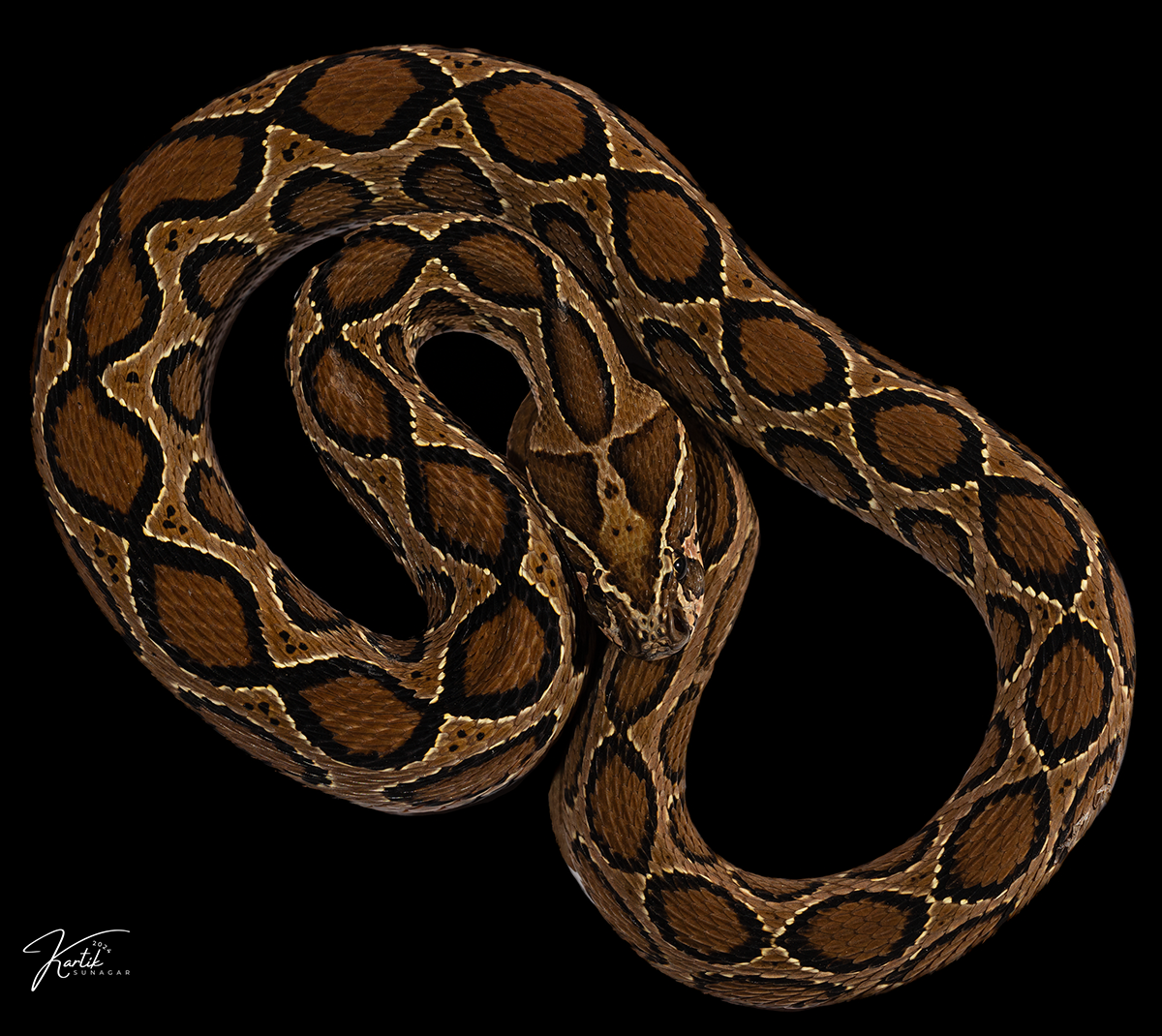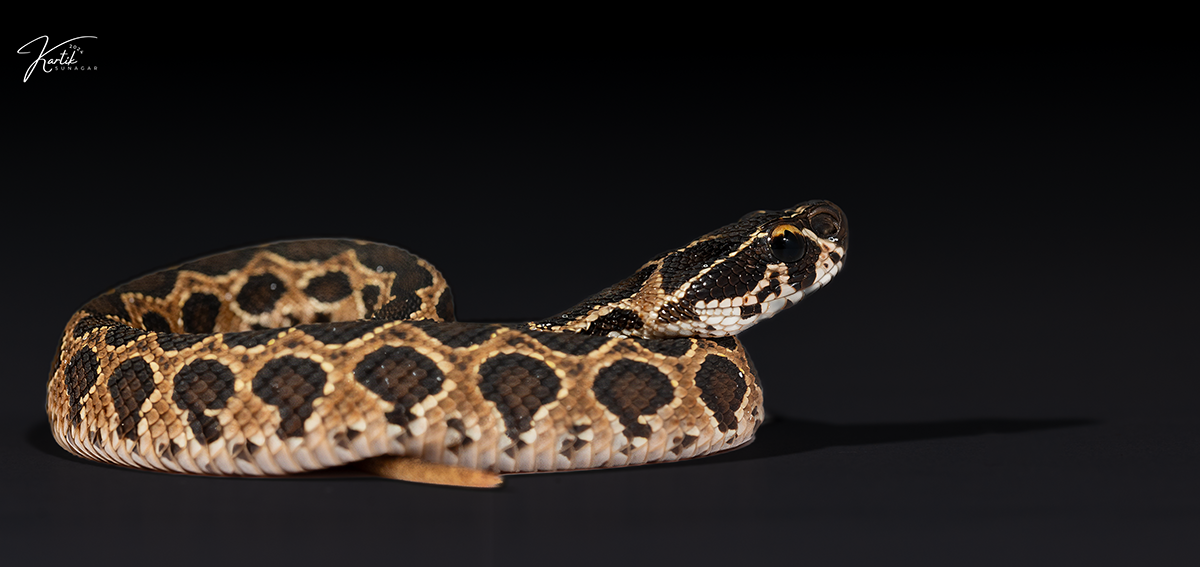From birth to bite: How snake venom varies with age
– Rohini Subrahmanyam

Adult Russell’s viper (Photo: Kartik Sunagar)
Snake venom has evolved into a complex cocktail of chemical killers, with remarkable diversity across different snake species. Even the same snake species can face different evolutionary and ecological pressures over time, which can change the potency of its venom.
In a recent study published in BMC Biology, Kartik Sunagar, Associate Professor at the Evolutionary Venomics Lab, Center for Ecological Sciences, IISc, and collaborators explored how the evolutionary ecology of two snake species shapes their venom as they age. The team focused on two clinically relevant venomous snakes in India, the Russell’s viper (Daboia russelii) and the spectacled cobra (Naja naja) – both responsible for a distressing number of deaths and disabilities.
The researchers maintained more than 200 snakes of the two species in captivity, to source venom from them at different stages of the snakes’ lives. They then performed several experiments to check how the composition, activity, and toxicity of the venom changes over time as these snakes change their diet from feeding on one prey to another.

Russell’s viper neonate (Photo: Kartik Sunagar)
Interestingly, the toxicity of the two snakes’ venom varied based on its ontogeny – at which stage of life it was sourced from. In the Russell’s viper, newborns had considerably higher toxicity against mammals and reptiles, as compared to juveniles and adult snakes. On the other hand, the toxicity levels of the cobra venom remained the same over the course of its development. The latter could, however, bind strongly to receptors found in the cell surface of various prey animals, most likely to make up for its lack of ontogenic variation, the researchers suggest. The results provide a glimpse into the evolutionary arms race between prey and predator, and how snakes have adapted and developed effective venom concoctions.
The findings of the study can not only help us better understand how snake venom diversity may have evolved, but also aid us in developing more effective snakebite treatments, which is also a major theme of the lab.
REFERENCE:
Senji Laxme RR, Khochare S, Bhatia S, Martin G, Sunagar K, From birth to bite: the evolutionary ecology of India’s medically most important snake venoms, BMC Biology (2024).
https://doi.org/10.1186/s12915-024-01960-8
LAB WEBSITE:
https://www.venomicslab.com/





